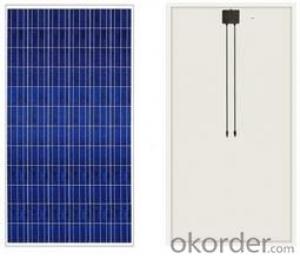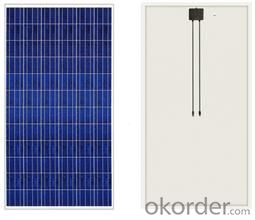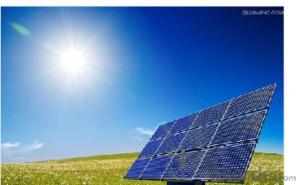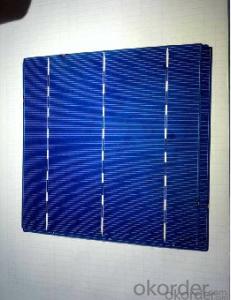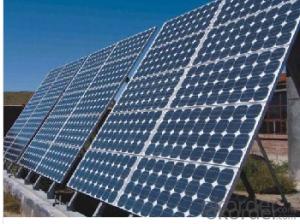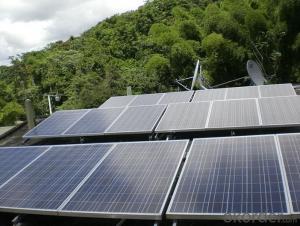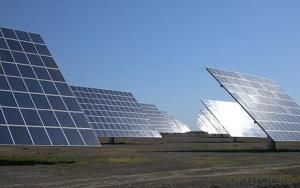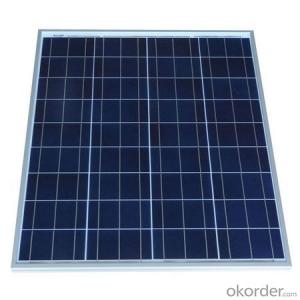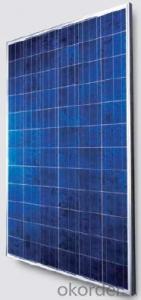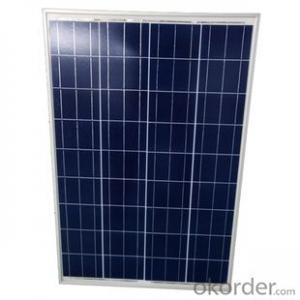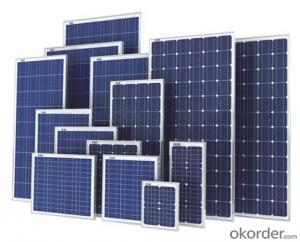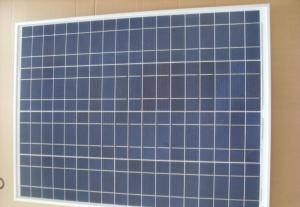Nest Solar Panels for Residential Crystalline Solar Systems on Sale
- Loading Port:
- Qingdao
- Payment Terms:
- TT OR LC
- Min Order Qty:
- 26 pc
- Supply Capability:
- 10000 pc/month
OKorder Service Pledge
OKorder Financial Service
You Might Also Like
Characteristics of Polycrystalline Solar Panel
I Solar Cell : High efficiency crystalline solar cell. Even if under the weak light, the solar module can produce maximum power output.
II Tempered glass (toughened glass): Anti-reflecting coating and high transmission rate glass increase the power output and mechanical strength of solar module.
III EVA and TPT: Using high quality EVA and TPT to prevent destroying and water.
IV AI frame: Without screw, corner connection. 6 holes on the frame can be installed easily.
V Junction box: Multi function junction box with water proof.
VI Long lifetime: ≥25 years; Less power decrease.
VII Good performance of preventing from atrocious weather such as wind and hails.
VIII Resisting moisture and etching effectively, not effected by geology. .
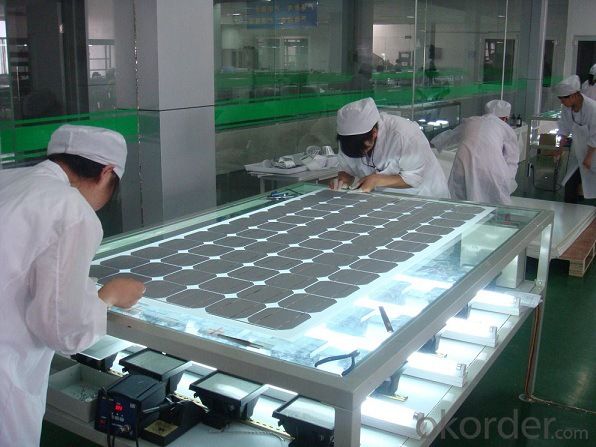
Standard Test Conditions of Polycrystalline Solar Panel
The opto-electrical specifications shown below are stabilized values being measured at Standard Test Conditions of multicrystalline silicon Solar Panel, Irradiance: 1000W/m2, Spectrum: AM1.5 at 25°C, The info below is subject to manufacturing tolerances. Where appropriate minutes of measurement are available and are used for the dimensioning of the installation.
Currently,We have 250w-300w solar panel stocks in Both West and East Coasts made in Vietnam,India,Korea,Malaysia and Japan.Meanwhile,we also arrange production line in Wisconsin,USA.If you're interested,please contact us soon.
Thanks for your time.
- Q: Can solar panels be installed on fences?
- Yes, solar panels can be installed on fences. In fact, fence-mounted solar panels are becoming increasingly popular as they provide an additional space-efficient solution for generating renewable energy.
- Q: Are there any tax credits available for solar panel installation?
- Yes, there are tax credits available for solar panel installation. The federal government offers a solar Investment Tax Credit (ITC), which allows homeowners and businesses to deduct a percentage of the cost of installing solar energy systems from their federal taxes. Additionally, some states and local governments also offer their own tax incentives and credits for solar panel installation. It is advisable to check with your local tax authority to determine the specific credits available in your area.
- Q: I am fairly new to the solar panel scene, and am eager to try to set one up myself instead of buying a kit. I am looking for a solar panel that puts out 00 Watts or more, and can produce more than 20 volts. Thanks
- you are able to desire to be greater specific approximately what variety of image voltaic panel. a million) PhotoVoltaic (produces electrical energy) 2) Fluid (Glycol) (heats water or air making use of a warmth substitute tank) 3) Fluid (Water) for pool water heating
- Q: Can someone tell me if I can run a air conditioner off solar panel?I have a ET-P65420 20Wp solar panel. What do I need to make it work? I am told I will need a Enphase Energy Microinverter M20. Is that true? I am looking to run a 5000 to 8000btu air conditioner to a max of 0000btu air conditioner. I need to cool a 0x30 space. One time I read, I need total watts of panel to match total watts of air conditioner. Then I read, that I do not and can run more watts then what the panel is depending on the inverter and batteries.Can someone tell me what and how to make this work please? More panes or inverter and batteries?
- Solar Panels Air Conditioner
- Q: Can solar panels be installed on a shaded area?
- Solar panels are most effective when placed in direct sunlight, so installing them in a shaded area would significantly reduce their energy production. However, there are technologies available, such as bifacial solar panels or solar trackers, that can optimize energy generation in partially shaded areas.
- Q: So you know how the bigger the surface area exposed to the heat radiation means the quicker it'll heat up.Is this what happens with solar panels, they have a large surface area exposing to the sun, so they can get more heat?
- Solar panels do heat up. But that's because the radiant energy from the Sun that lies within the infrared (IR) band of energy causes the material in the panels to heat up. And that's the same for any body that has the Sun shine on it. Your face, for example, will heat up while you get a nice tan on the beach. That's due to the heat producing IR radiant energy. Now if those solar panels are supposed to heat buildings etc., that heat produced in the panels when the IR strikes them will be transferred, usually by some fluid, to floors of the rooms to be heated. And as the amount of heat generated by the Sun is proportional to the area of the solar panels, bigger areas of panel will generate more heat than smaller areas. Photoelectric solar panels are another kind. Here the interest is in the visible band of radiant energy from the Sun. Heat, from IR, is still there, but it is not the product sought by PE solar panels. The visible light photons knock off loosely bound electrons from the photoelectric material (typically silicon based) and those electrons are siphoned off as current. That's where the electrical power comes from for buildings using PE solar panels to provide their own electricity.
- Q: Was looking at 0w solar panel kit. Does this mean, all I can use is something like a 0W CFL light bulb and nothing else?
- No. The way to set it up is to store the power generated by the solar panel in a battery, then use the battery to power your lights, radio, etc, when you need the power. A standard deep-cycle marine battery is typical for panels of this size (WalMart for approx $90). A 0W panel will generate between 30 50 Watt-Hours of power over the course of a day (May-Aug weather-dependent), so this would equate to running a laptop for -2 hours, or a 0W CFL light for 3-5 hours, or a 20W stereo for .5-3 hours, etc. I find it is much easier to speak in terms of watts. Divide the watt-hours by the watts of the appliance to get the number of hours it can run. Hope that helps!
- Q: I know the basics of how solar panels work. Solar panels convert sunlight into DC electricity which is stored in batteries which would need to be run through an inverter to convert it to household AC. But is there a way for the appliances to use the solar panels electricity FIRST and any additional power from the grid? Is that how it works or do they only run specific devices(water heater, pool pump, etc)?
- The batteries are inefficient and expensive. Lead acid batteries are 95% efficient at discharging but only 50% efficient at charging so you need double your power consumption in solar panels for a battery based system. The big breakthrough was in grid tied inverters, these can be connected to the grid and synchronizes it's frequency to the grid thereby selling the solar power to the grid. The house electric system remains on the grid so you buy back the power when you need it effectively turning the grid into a 00% efficient battery by accounting. This saves you the cost of the batteries and the inefficiencies of the batteries halving the number of panels that you need. Grid tied solar can be a third the price of a comparable battery based system. The utilities will usually still have a service fee and may have limitations such as you can only sell the amount of power that you use and the sale can only be credits versus future energy purchases. There will also be the inefficiencies of the grid tied inverter but it would be at full load which is when it is the most efficient often 95% whereas the partial load use of a battery based system operates the inverter at an average of 65% efficiency which is why DC appliances are highly recommended for a battery based system.
- Q: How much per sq inch do they cost? Will i have to worry about them blowing off during hurricane season? If the sun isnt out for a week will my power go out? Will I have to check them every week and check which ones arent working and replace them? Is there anyway for them to be damaged by acid rain or any type of erosion like hail? When do I have to replace them? How do I dispose of old ones (like recycling)? What is smarter and more economical having few big panels or many small ones? I know I have alot of questions but I want a good detailed answer.
- What's your Source (Optional)
- Q: I have this question for extracredit and I dont get it?How many 2V,2W PV panels would be required to supply a load that requires a 48-volt supply that can push at least 2.8 amps of current, if you assume each panel puts out A at 2 V? And how are the panels configured to supply the power requirements of the load?
- i agree with Liz but have a diffrent point i think u have not calculated for the roof mounted solar panels i am giving youy a bsic understanding hope that will help you Roof Mounted solar power systems consist of solar panels held in place by racks or frames which are attached to roof based mounting supports. Roof based mounting supports include: Pole mounts which are attached directly to the roof structure and may use additional rails for attaching the panel racking or frames. Ballasted footing mounts such as concrete or steel bases that use weight to secure the panel system in position and do not require through penetration. This mounting method allows for decommisison or relocation of solar panel systems with no impact on the roof structure.
Send your message to us
Nest Solar Panels for Residential Crystalline Solar Systems on Sale
- Loading Port:
- Qingdao
- Payment Terms:
- TT OR LC
- Min Order Qty:
- 26 pc
- Supply Capability:
- 10000 pc/month
OKorder Service Pledge
OKorder Financial Service
Similar products
Hot products
Hot Searches
Related keywords
